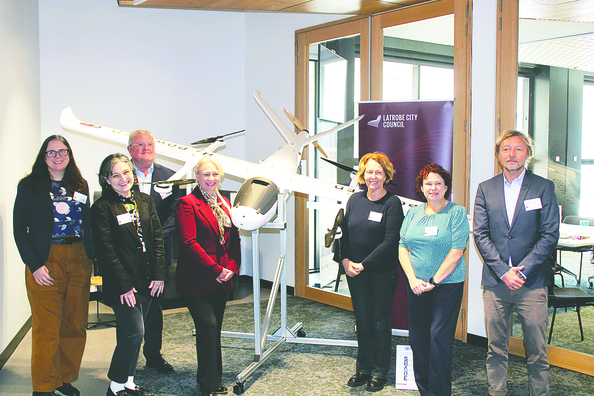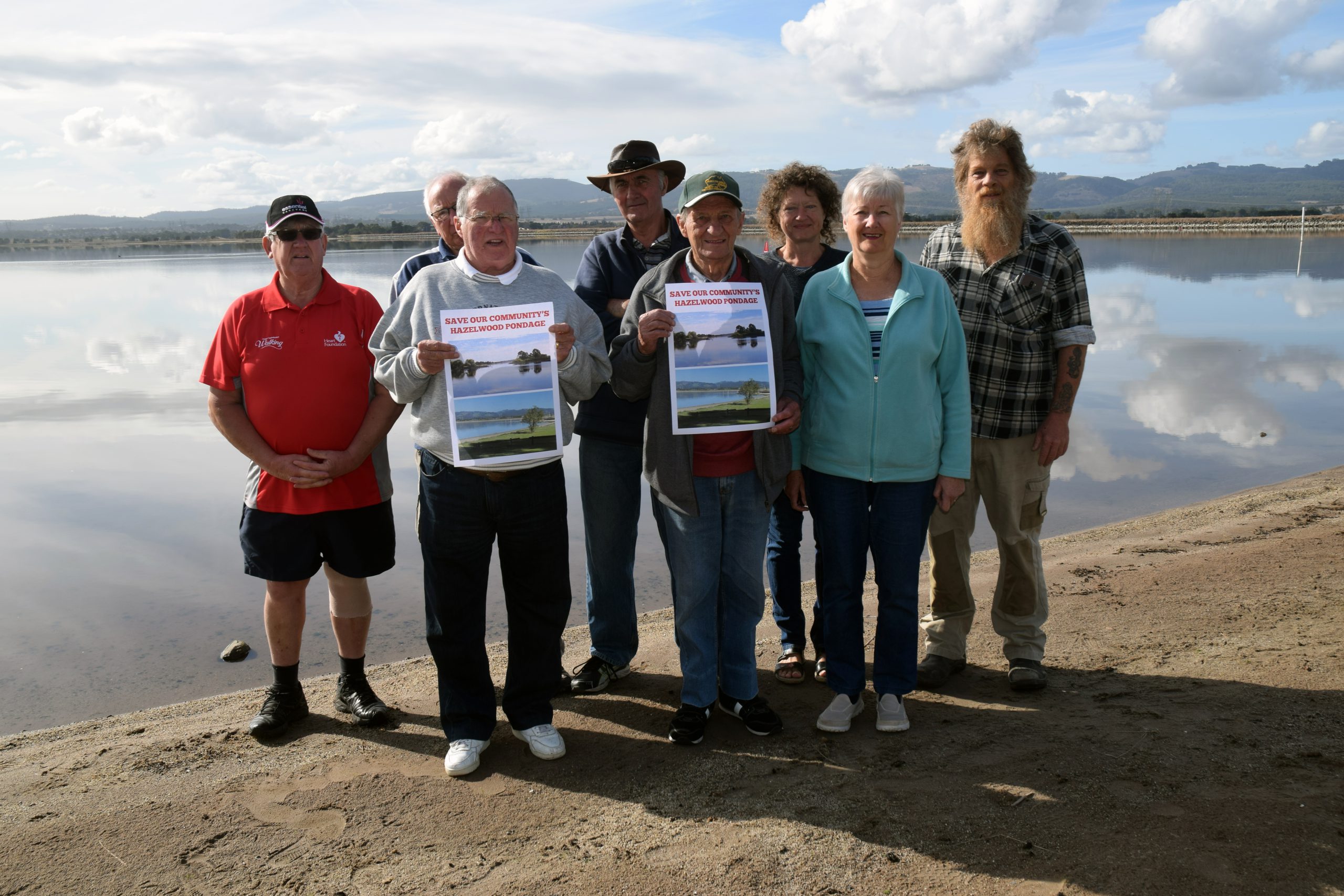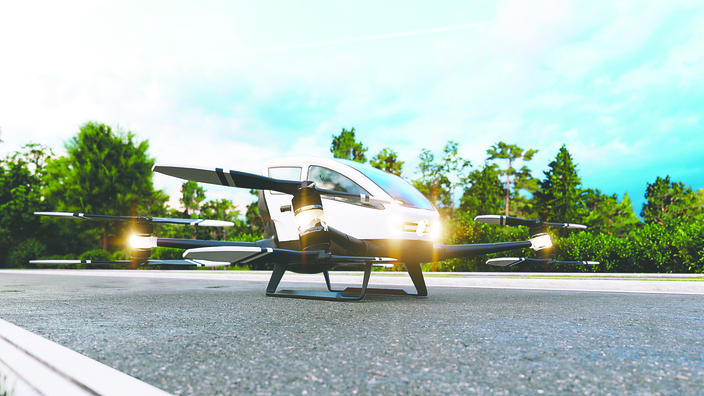By AIDAN KNIGHT
THE Latrobe Valley could soon swap smokestacks for skyports, with Swinburne University using a Morwell conference to pitch the region as the home base of Australia’s next great industry: Advanced Air Mobility (AAM).
Swinburne recently held an all-day conference covering the potential future of air industries in the Latrobe Valley, titled ‘Introduction to Advanced Air Mobility’. Hosted by the Morwell Innovation Centre, around 40 participants from various organisations attended lectures from what was described on the day as “Australian aerospace royalty”.
A multitude of topics and programs were discussed, all centred around future advancements in air mobility both as a service and business.
However, everyone’s attention on the day was focused on the future of the Latrobe AAM Technology Precinct.
Speaking passionately on this was Peter Smith, a leading figure in Australian aerospace. Boasting an impressive resume as a veteran of the sector who has served as vice president of the Australian Association for Uncrewed Systems, Director of the Association of Unmanned Vehicle Systems International (AUVSI), and a global defence and aerospace consultant, his message to the Valley was simple: why not build the future of aviation here?
Mr Smith effectively pitched to the room that the Latrobe Valley should become the producer of Advanced Air Mobility for the rest of Australia.
This is a broad concept that encapsulates many sectors, Smith explained, but essentially would mean the production, development and implementation of a new variety of small aircraft that produces zero emissions.
AAM as a concept are large, unmanned drones, utilising digitalised development and vertical take-off and landing,
While there are multiple variations on design, AAM are constructed from advanced composite material, rather than a heavier steel or aluminium, and fly autonomously, utilising a multitude more propellers than what is accustomed to thinking of small aircraft, which Mr Smith explained “are the most dangerous ways to travel”.
An AAM is “a helicopter, but safer, quieter and more sustainable”.
The ultimate goal once implemented is that AAM be powered from a distributed electric battery and hydrogen propulsion.

In October 2024, Toyota invested $500 million into Joby Aviation, a company developing AAM as an electric air taxi brand, or as Peter Smith put it, “Uber in the sky”.
Interestingly, the AAM concept was first coined by Uber itself in 2017, under ‘ Uber Elevate’, before the company withdrew in 2020 after development took longer than expected.
The first certified AAM originated in China last year, and is expected to be certified by early 2026.
Swinburne is urging Australia to undertake measures and investments allowing the nation to be at the forefront of this certification, being one of the first countries to rollout what they see as an inevitable, innovative technology.
As Mr Smith explained, the Latrobe Valley is a key location in this. The region has accommodating space and the existing industry looking to transition, that could make it a prominent area in industry the same way it has been for power since the 1920s.
This technology is important to Australia, particularly regional areas, as regional airports are declining in their current state, with only Mildura currently being accessible for passenger planes from Tullamarine.
The successful introduction of AAM could present a new mode of transport bypassing the cities, across the country, connecting region-to-region, more effectively than ever before.
If city commute was the desire, Mr Smith says this could be done from Morwell in about 40 minutes flat – better than any iteration of the Gippsland train line.
Advanced Air Mobility can land and take off from any paddock, oval, field or cattle station, making it a highly flexible transport with the capability for postal, medical, and emergency services uses as well.
“AAM can be used to get results back to patients quicker, transport bloods, organs and other important resources, safer and more efficiently,” Smith said during the session.
“It can be used for traffic control and fighting bushfires and evaluating a wide range of emergency scenarios.
This is technology currently being researched by NASA, The European Union, the United Arab Emirates government, and many other bodies, and with the current trajectory of China and Australia, experts are estimating 41 per cent of the market by 20245 will originate from South East Asia.
Latrobe City has been working with Swinburne to develop an integration of AAM into the existing aero industry since 2023, with much of the groundwork in this partnership done under previous council mayor, Kellie O’Callaghan.
Upon announcing this partnership in March 2023, Ms O’Callaghan said, “As our region transitions from the traditional industries that have underpinned our economy, we need to look towards new industry and be innovative in our thinking of what the jobs of the future look like.”
This perspective has been carried by now-mayor Dale Harriman and his team of councillors, four of whom were in attendance to hear of the benefits of AAM.
While the potential is enormous, experts caution there are significant challenges ahead.
AAM technology is still in its early stages, and fully autonomous flight carries inherent safety risks.
Beyond proving safety cases, developers must secure large-scale funding, overcome the limits of current battery density, and earn public trust. Certification frameworks remain underdeveloped, and integrating new aircraft into national airspace will require careful coordination with existing aviation systems.
So while nobody’s promising flying DeLorean’s just yet, locals could be forgiven for thinking the Valley’s future looks a little more back to the future than back to the drawing board.
The attraction zero-emission aspect of the plan also completely eliminates Doc Brown yelling something about 1.21 gigawatts, as well.
Swinburne’s current projected timeline for commercial operations of AAM within Australia is 2027, which they estimate will be successfully hydrogen-powered a year after.
The researchers are aiming for the first certified autonomous passenger carrying by the end of the decade.
As Mr Smith said to the group plainly, “the Jetsons got it right, and it could mean tremendous things for the Latrobe Valley.”











